|
McCloud River Lumber Company
Narrow Gauge Plant Switching Railroad |
|
|
|
In its first years of operation the McCloud River Lumber Company produced green lumber in McCloud, which the railroad would haul to the finishing factories in Upton. The lumber company shortly started building drying kilns, planing mills, box and sash/door factories, and other facilities in McCloud. Higher graded lumber would be kiln dried and stored in various drying sheds, while the lower shop and similar grade lumber tended to be air dried in massive drying yards that once surrounded the sawmill buildings. Like many other similar operations the lumber company turned to a narrow gauge railroad to move lumber around the increasingly sprawling complex. |
|
|
 |
|
Map of the building arrangements and trackage arrangements around the original Mill #2 on the south side of town. The tracks once extended through town to the newer mill complex.
|
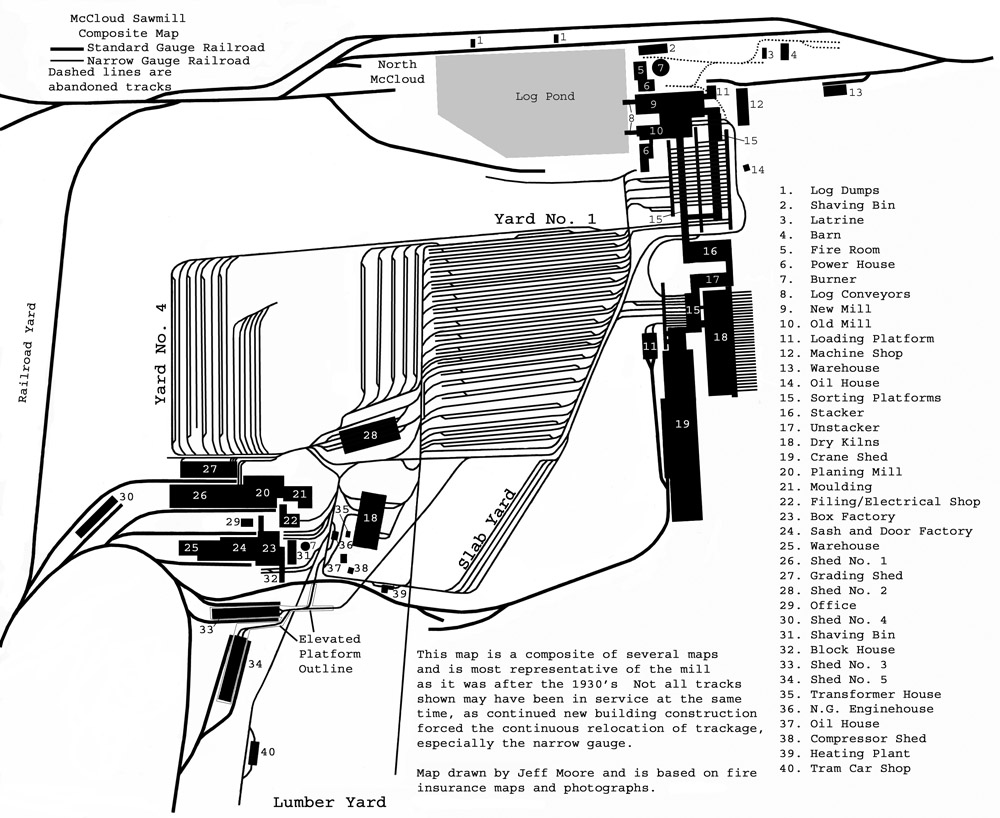 |
|
Map of the main sawmill complex most typical of the way things were laid out in the middle 1930s.
|
|
|
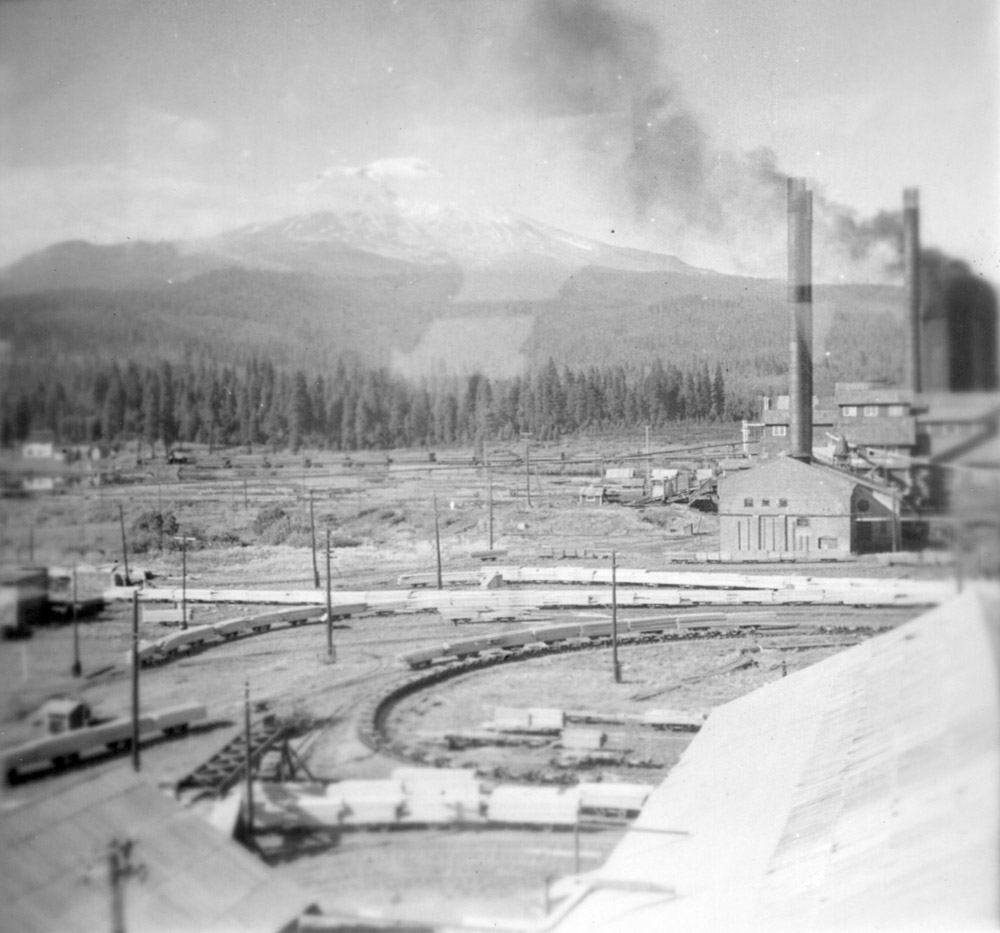 |
|
Many tram cars loaded with lumber are visible in this view taken from the roof of the crane shed. T.E. Glover collection.
|
|
|
 |
|
A postcard view of the east side of the sawmill buildings with several tram cars visible. Jeff Moore collection. |
|
|
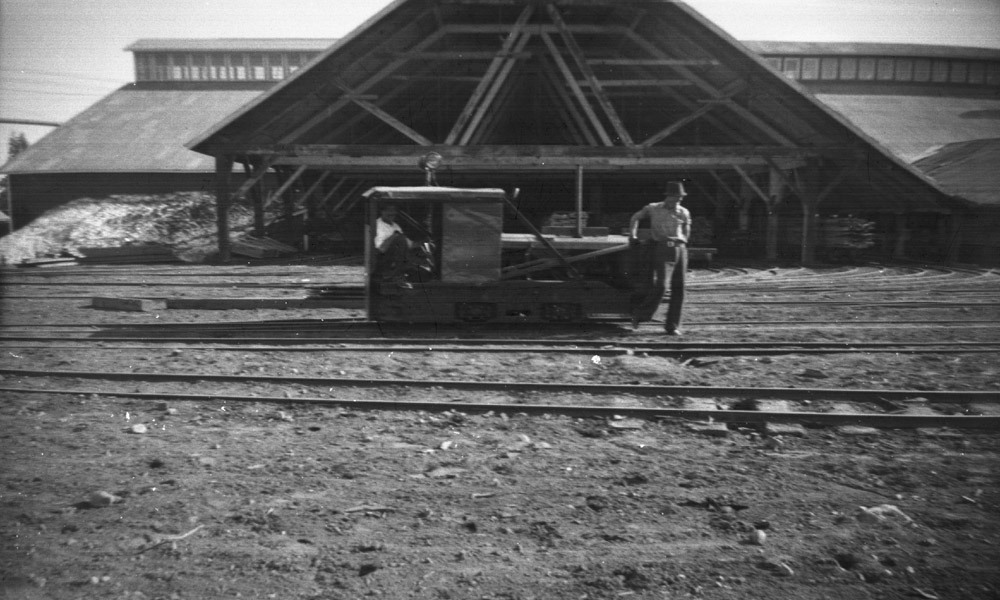 |
|
The small Plymouth switcher in front of one of the factories, likely in the late 1930s. T.E. Glover collection. |
|
|
 |
|
Crew working on one of the battery electric locomotives while plowing snow on the narrow gauge. Jeff Moore collection. |
|
|
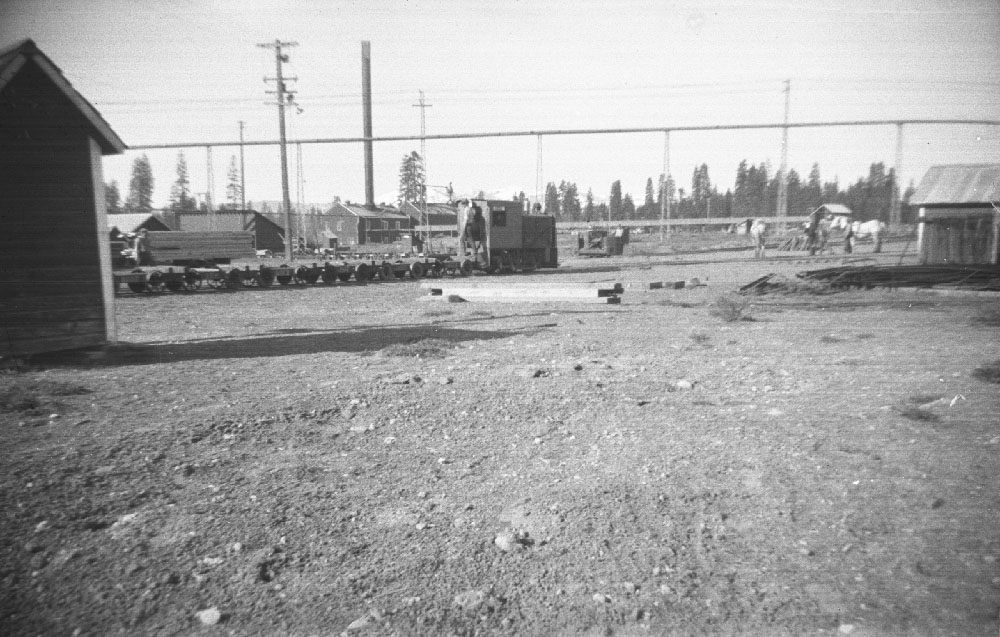 |
|
One of the Vulcans, what appears to be the Plymouth, and a horse at work probably in the late 1930s. T.E. Glover collection. |
|
|
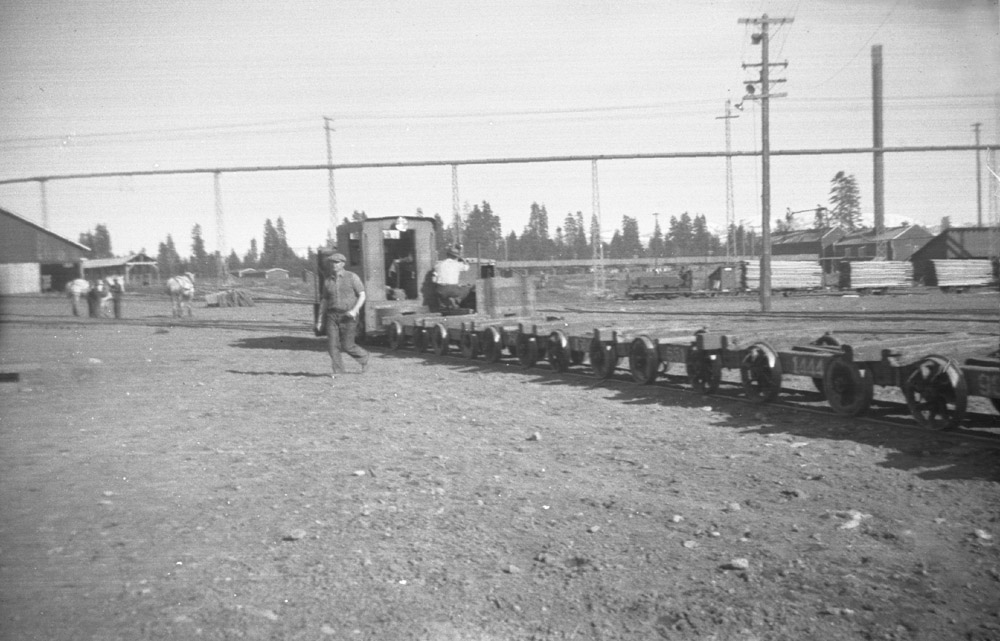 |
|
Another view of one of the Vulcans, again probably in the late 1930s. What appears to be one of the battery electric locomotives is visible to the right. T.E. Glover collection. |
|
|
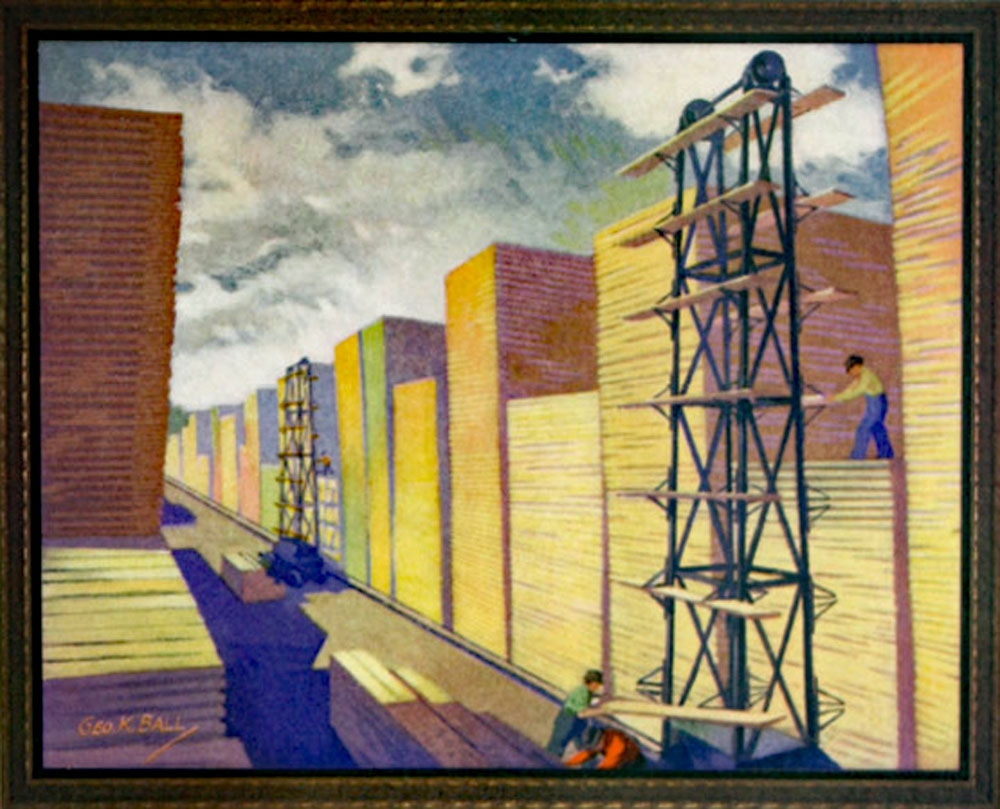 |
|
One of the principle roles the narrow gauge played was in moving lumber into and then out of the vast lumber yards around the mill. This painting from the Specify Shevlin Pine booklet in the Advertising Materials section of this website shows the stacking machines at work. |
|
|
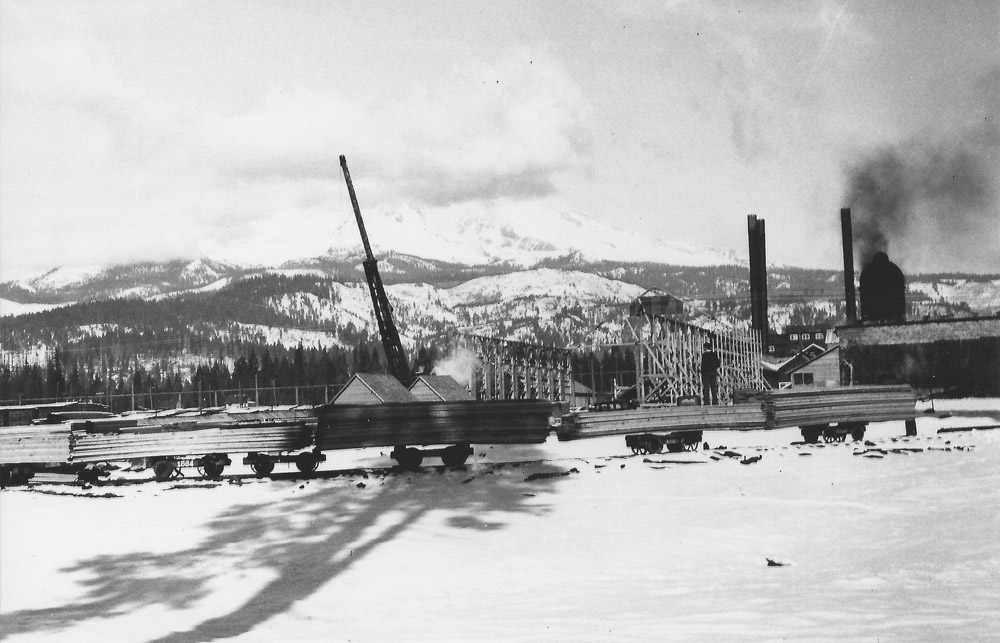 |
|
In 1938 the massive crane shed, which had a storage capacity of eleven million board feet of lumber, burned to the ground in a spectacular fire. The lumber company immediately set out to build a new shed. Several tram cars are delivering lumber to the effort. T.E. Glover collection. |
|
|
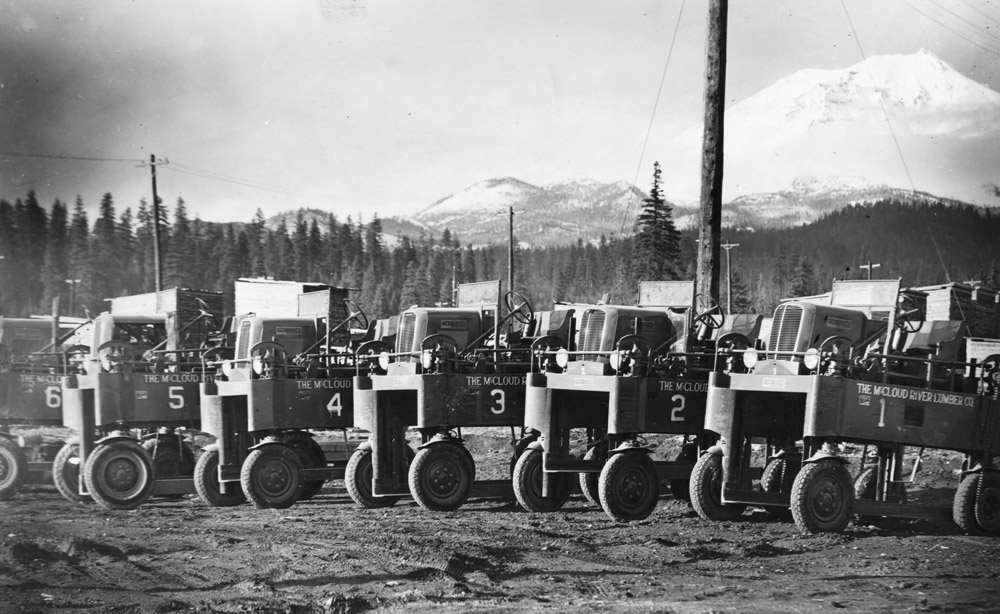 |
|
Six of the straddle carriers that started replacing the narrow gauge in the 1940s. Ray Piltz photo, Travis Berryman collection. |
|
|
|
In 1969 C.G. Heimerdinger Jr. arranged for a walking tour of the McCloud sawmill and its narrow gauge railroad that occurred the day after one of the regular excursions with the #25. The lumber company put on quite a show for the small group of photographers, including spotting its locomotives and equipment at various points around the sawmill for the photographers. These rare views are all by C.G. Heimerdinger Jr. |
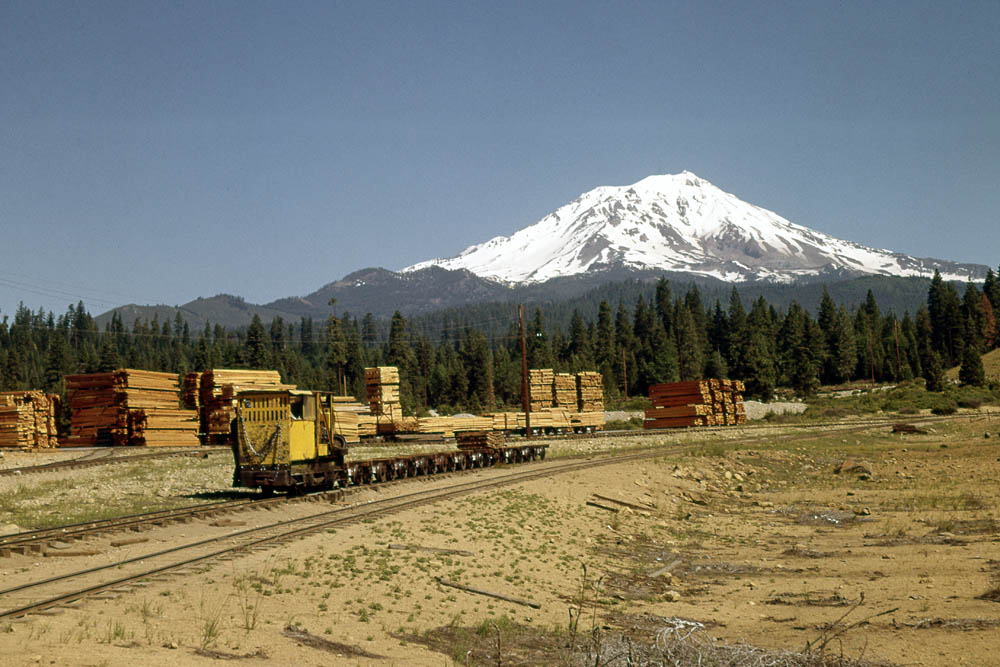 |
|
The small GE battery electric rebuilt with a Buda diesel rolls some empty cars through the mill. |
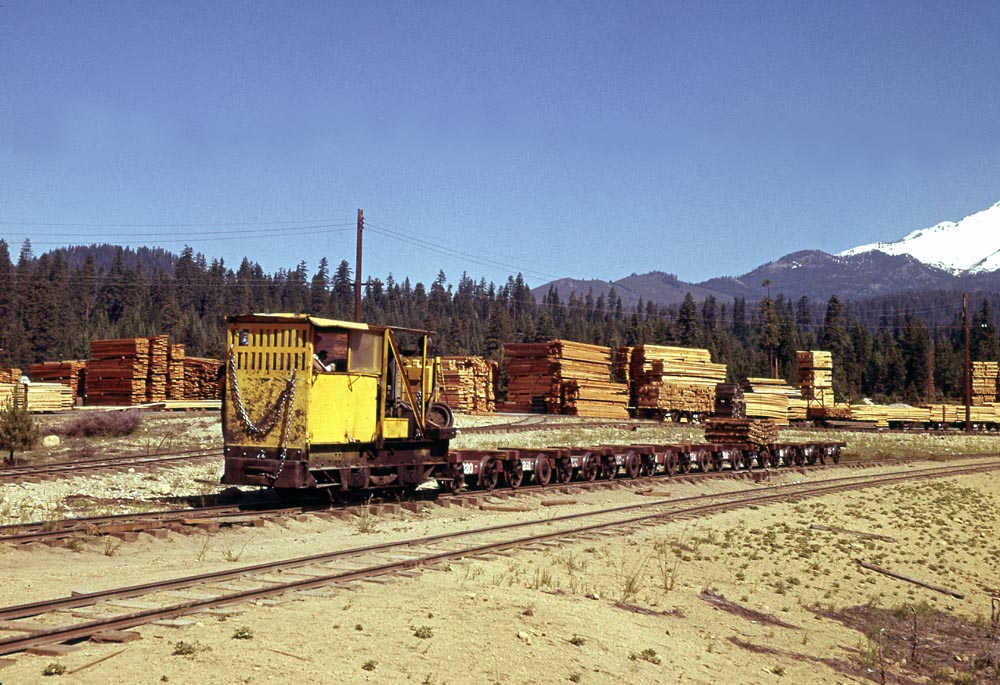 |
|
A closer view of the GE/Buda. |
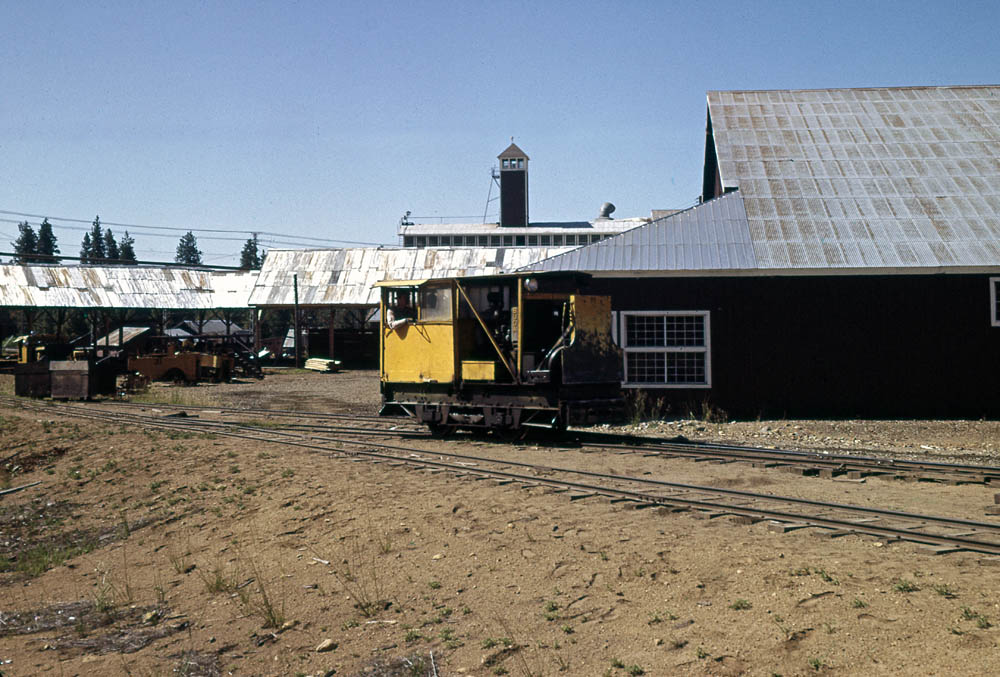 |
|
The GE/Buda elsewhere in the mill. |
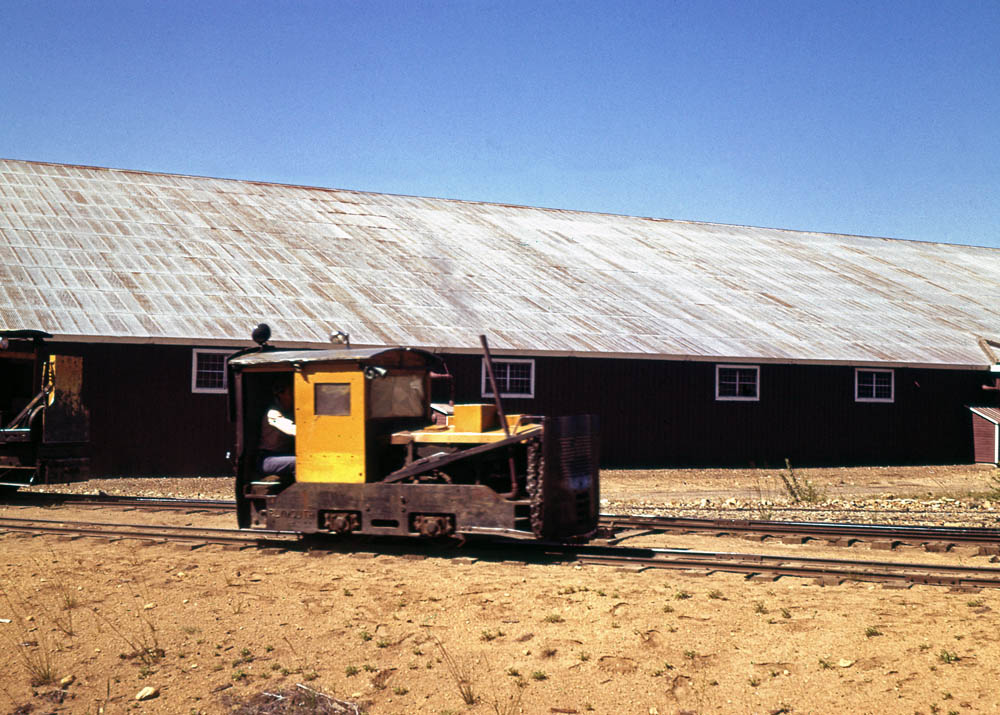 |
|
The Plymouth locomotive. |
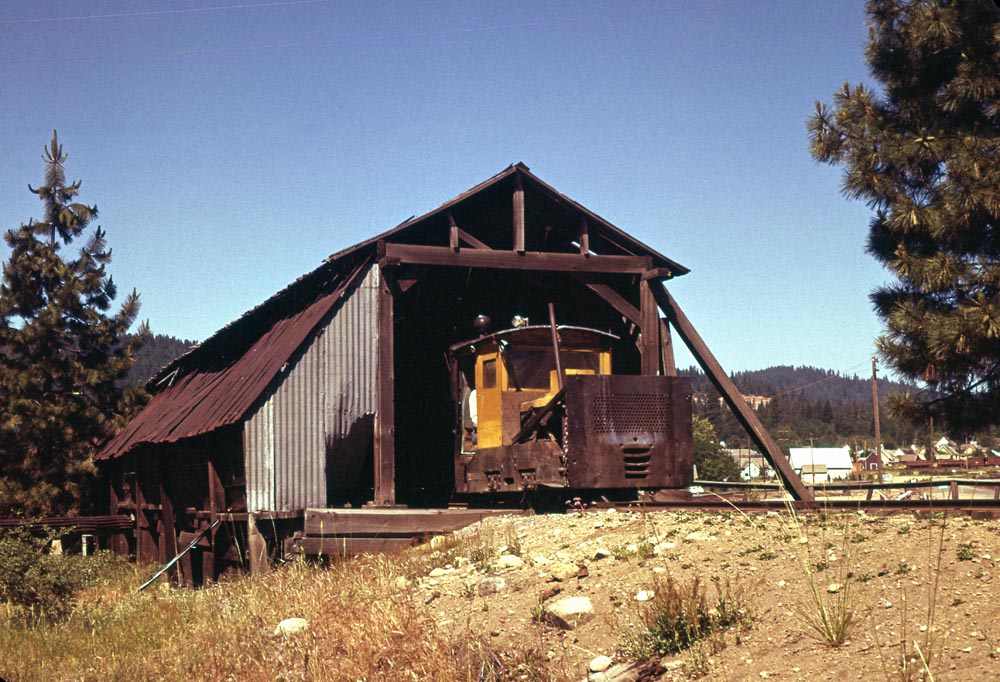 |
|
Another view of the Plymouth, this one in one of the sheds for the narrow gauge equipment. |
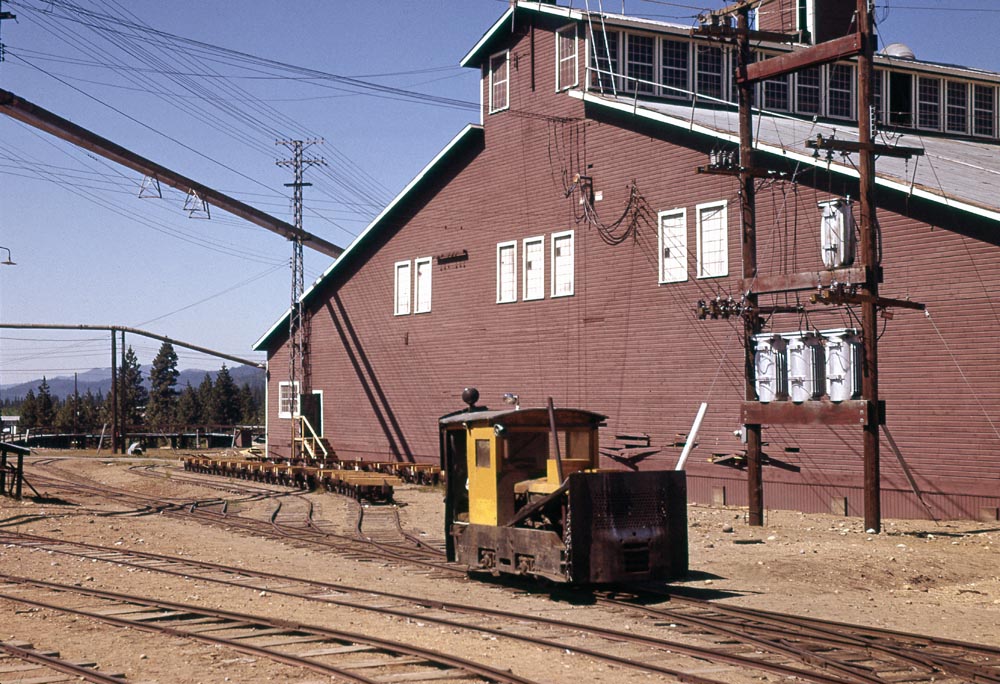 |
|
The Plymouth doing some switching near the planing mill. |
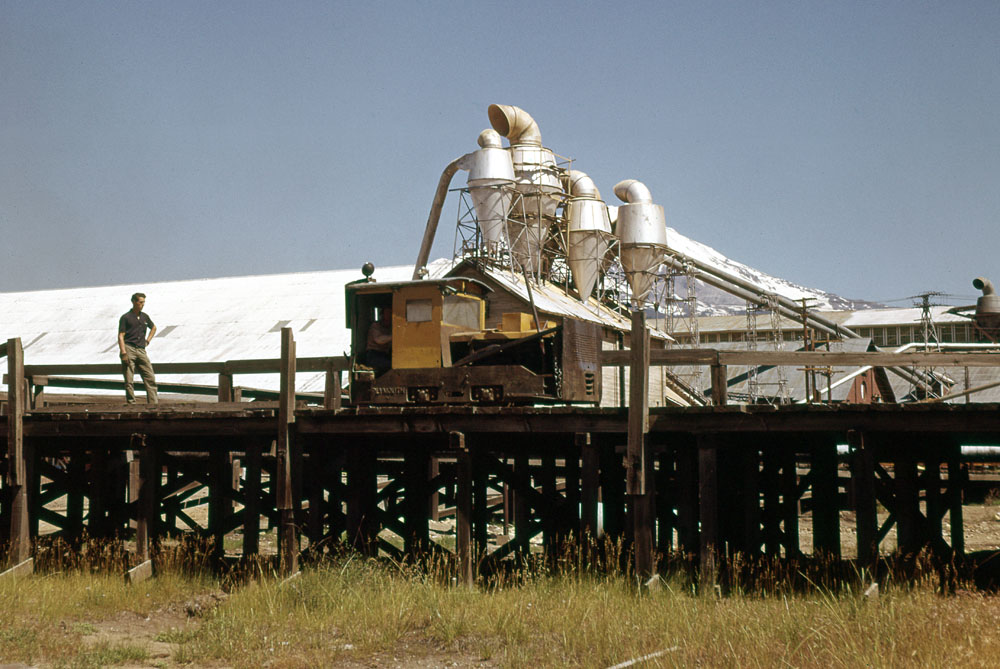 |
|
At one point during the day the lumber company ran the Plymouth up one of the raised platforms around the complex. |
 |
|
The Plymouth starting to roll off one of the ramps down from the platform. |
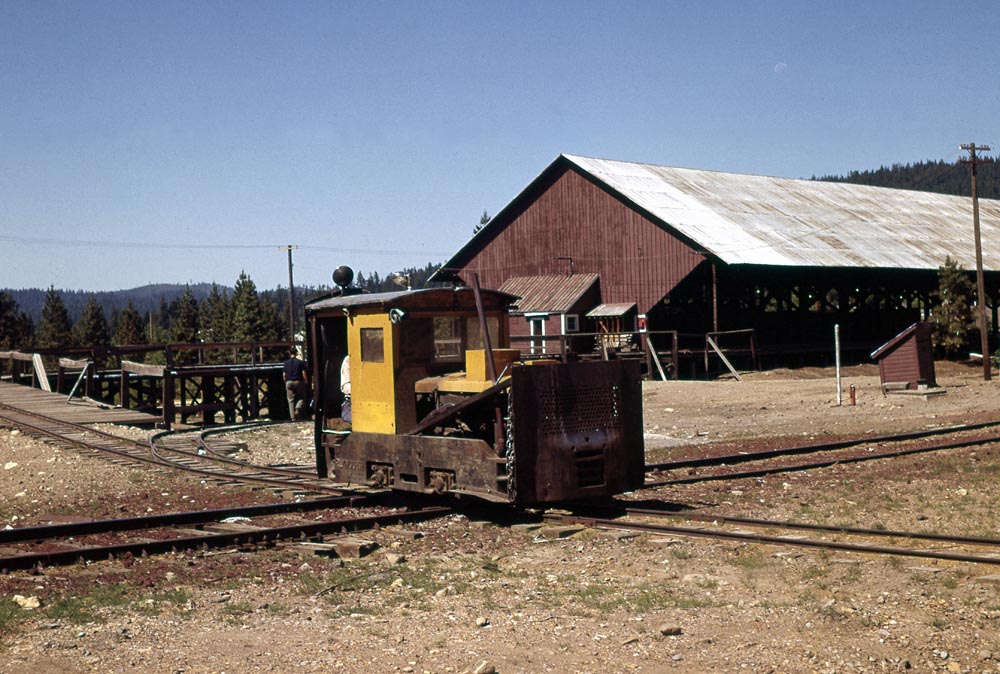 |
|
The Plymouth crossing a standard gauge spur after rolling off the platform. |
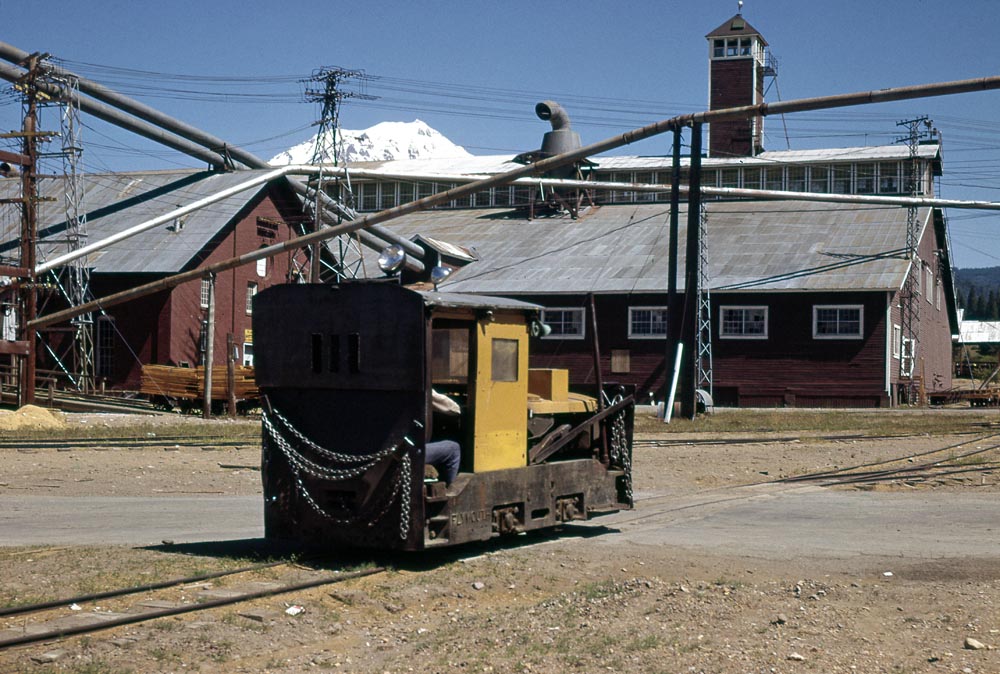 |
|
The Plymouth heading away from the photographer and into the mill complex. |
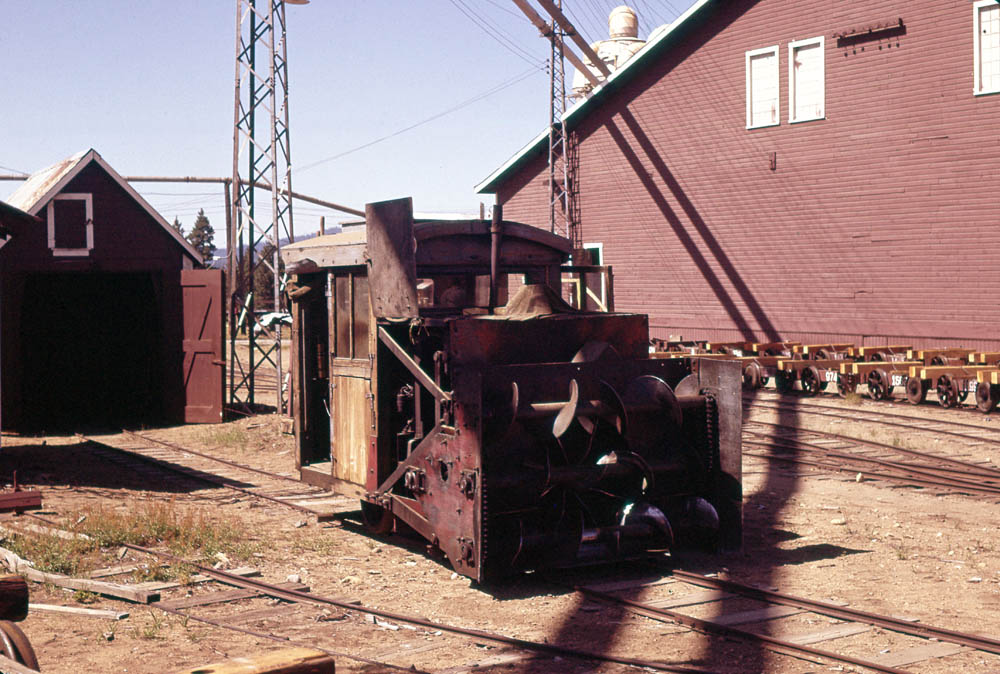 |
|
The rotary snowplow in the mill. This one is said to have been built around the frame of a Caterpillar Sixty tractor. |
|
|
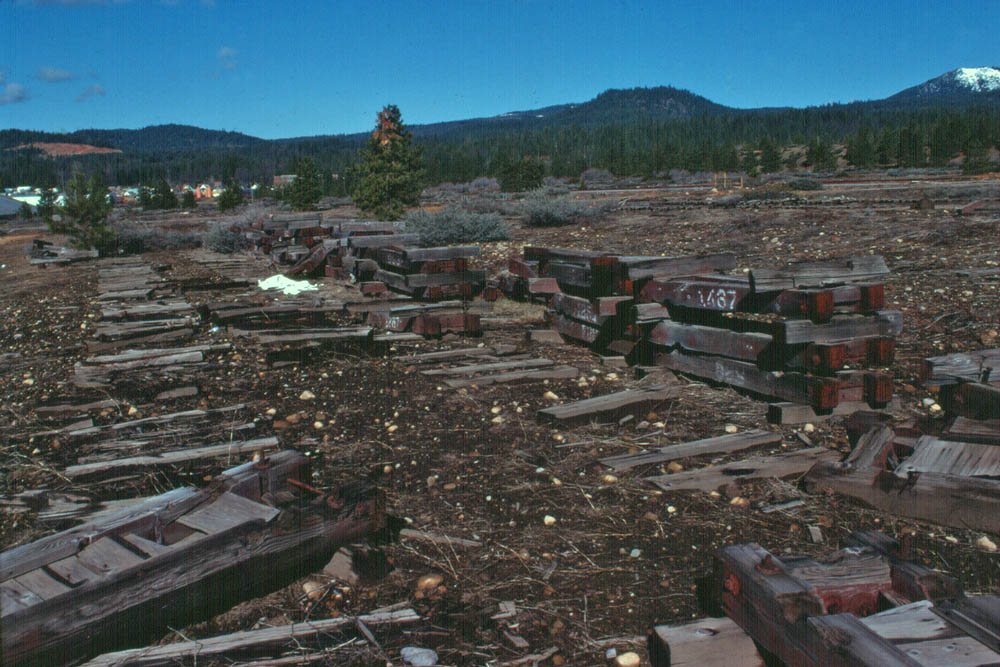 |
|
The end of the narrow gauge. Several tram cars await the torch in the mill. Wayne I. Monder photo. |
|
|